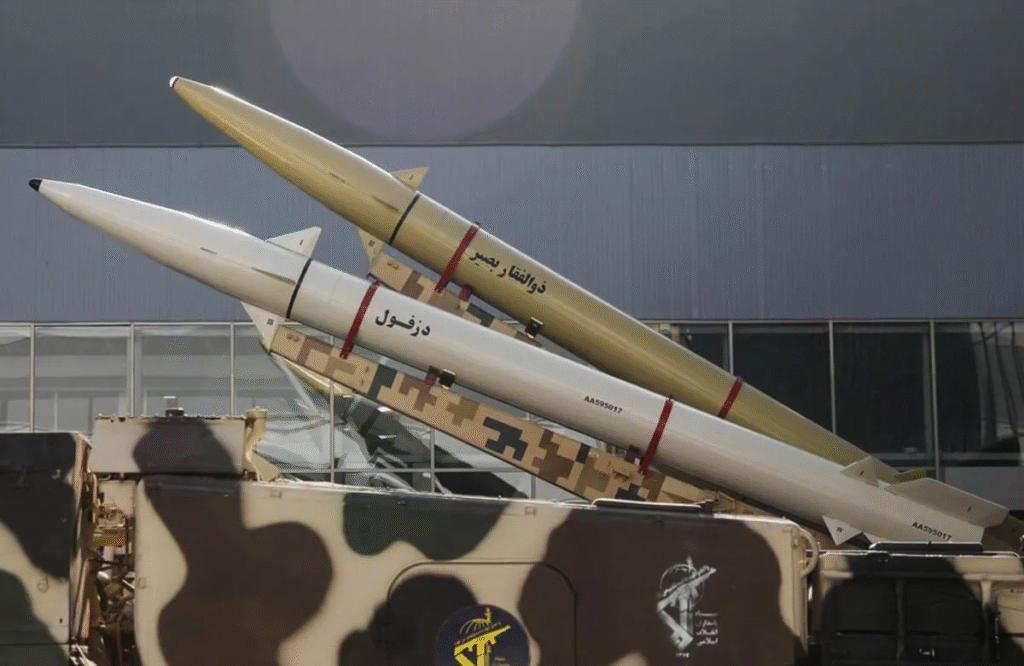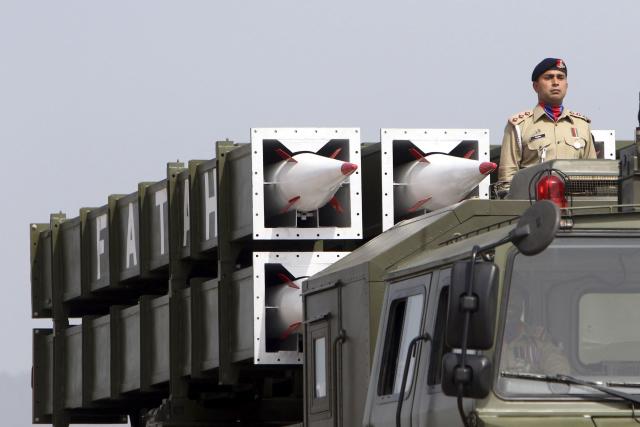
India is on high alert after intercepting a Fateh-2 missile near Sirsa, Haryana. The incident has raised significant concerns about national security and prompted the launch of Operation Sindoor to fortify defenses across major cities. The developments come amidst heightened tensions with Pakistan following their ongoing Operation Bunyan-ul-Marsoos, aimed at bolstering their missile capabilities.
The Missile Interception in Sirsa
The Fateh-2 missile, originating from Pakistan, was successfully intercepted by Indian defense forces in a strategic operation near Sirsa. Reports indicate that the missile was neutralized before it could cause any harm, showcasing India’s advanced missile defense technology.
The interception highlights a growing trend of regional militarization and underscores the importance of India’s readiness to counter such threats. Defense experts have lauded the swift action by Indian forces, attributing the success to enhanced surveillance and real-time intelligence.
The quick interception also serves as a reminder of the persistent security threats India faces. It underscores the need for continued vigilance, advanced defense mechanisms, and comprehensive training for personnel involved in national security.
Context: Pakistan’s Operation Bunyan-ul-Marsoos
Operation Bunyan-ul-Marsoos, initiated by Pakistan, has been a subject of scrutiny for its focus on strengthening missile arsenals. The operation has led to increased testing and deployment of tactical missiles, including the Fateh-2, which boasts precision strike capabilities.
The strategic intent behind Pakistan’s operation reflects its efforts to enhance its deterrence posture and project power in the region. Analysts believe that these developments are part of Pakistan’s broader strategy to counterbalance India’s regional dominance. However, such actions have also escalated tensions, prompting India to adopt a more vigilant stance.
Moreover, Pakistan’s growing collaboration with other nations for missile technology has become a matter of concern for India. With the Fateh-2 being a symbol of Pakistan’s ambitions, the broader implications of such advancements cannot be overlooked.
Operation Sindoor: India’s Countermeasure
In response to the missile threat, India has launched Operation Sindoor, aimed at bolstering defense systems across major metropolitan areas. The operation involves:
- Deployment of Advanced Missile Defense Systems: State-of-the-art interceptors are being positioned at strategic locations to intercept potential threats effectively.
- Enhanced Intelligence Sharing: Collaboration between intelligence agencies and defense forces has been intensified, ensuring seamless communication and rapid decision-making.
- Public Safety Measures: Awareness campaigns and evacuation drills are being conducted to prepare citizens for potential emergencies, emphasizing the importance of civilian readiness.
Operation Sindoor also includes a strategic review of existing infrastructure to identify vulnerabilities. This comprehensive approach demonstrates India’s commitment to not only responding to threats but also proactively mitigating risks.
Defense Minister Rajnath Singh emphasized the government’s commitment to safeguarding the nation’s security, stating, “India will not compromise on its sovereignty and territorial integrity.” His words resonate with a nation determined to defend itself against external threats.
The Technological Edge: India’s Missile Defense
India’s missile defense systems, including the indigenous Advanced Air Defense (AAD) and Prithvi Air Defense (PAD) systems, have been pivotal in neutralizing threats. The interception of the Fateh-2 missile underscores the effectiveness of these systems.
Key features of India’s missile defense capabilities include:
- Multi-Layered Defense: Integration of surface-to-air and air-to-air interceptors provides a robust framework for threat neutralization.
- Real-Time Targeting: Advanced radar and tracking systems enable precise interception, reducing response time significantly.
- Indigenous Innovation: Development of homegrown technology has reduced dependency on foreign suppliers and fostered technological self-reliance.
India’s success in intercepting the Fateh-2 missile has sent a strong message to adversaries. It showcases the country’s readiness to defend its sovereignty and protect its citizens from any potential threat.
Regional Implications and Global Reactions
The interception of the Fateh-2 missile has not only heightened India-Pakistan tensions but also drawn international attention. Global powers have called for restraint, urging both nations to prioritize dialogue over confrontation.
The United States and the United Nations have expressed concerns over the potential escalation of hostilities in the region. A spokesperson for the UN stated, “Peace and stability in South Asia are critical for global security.” The international community has highlighted the need for de-escalation and confidence-building measures to prevent further instability.
China, a key player in the region, has maintained a neutral stance, advocating for diplomatic solutions. However, Beijing’s growing influence in Pakistan’s defense sector has been a point of contention for India. This dynamic has added a layer of complexity to the regional security environment.
Countries like Russia and the European Union have also weighed in, urging both India and Pakistan to engage in constructive dialogue. The international community’s focus on South Asia reflects the global implications of any conflict between the two nuclear-armed neighbors.

Public Sentiment and Media Coverage
The missile interception has sparked widespread discussions across India. Citizens have expressed mixed reactions, ranging from pride in the country’s defense capabilities to concerns over escalating tensions with Pakistan.
Media outlets have extensively covered the incident, highlighting the role of Indian forces and the implications for national security. Social media platforms are abuzz with debates on the necessity of strengthening India’s defense infrastructure. From thought leaders to ordinary citizens, voices across the spectrum are united in acknowledging the importance of vigilance and preparedness.
This public discourse underscores the significance of national security in shaping public opinion and policy priorities. The widespread attention also reflects a growing awareness among citizens about the complexities of regional geopolitics.
Historical Perspective: India-Pakistan Missile Rivalry
The India-Pakistan missile rivalry dates back to the late 20th century, marked by an arms race fueled by mutual distrust. Key milestones include:
- 1998: Both nations conducted nuclear tests, solidifying their status as nuclear powers and escalating the arms race.
- 2001: Pakistan’s introduction of the Hatf series of missiles, demonstrating advancements in short-range ballistic missile technology.
- 2012: India’s successful test of the Agni-V intercontinental ballistic missile (ICBM), highlighting its long-range strike capabilities.
This rivalry has prompted significant investments in missile technology, making South Asia one of the most militarized regions globally. The historical context adds depth to the current dynamics, emphasizing the enduring nature of the security challenges faced by both nations.
Strategic Implications for India
The recent developments highlight the need for India to adopt a proactive defense strategy. Key priorities include:
- Strengthening Border Security: Enhanced surveillance and deployment of advanced weaponry along the India-Pakistan border are critical to deterring threats.
- Fostering Regional Alliances: Collaboration with neighboring countries, including Bangladesh and Nepal, can help counterbalance Pakistan’s growing arsenal.
- Investing in Research and Development: Accelerating innovation in defense technology is essential to maintaining a strategic edge over adversaries.
- Enhancing Cybersecurity: With the increasing integration of digital systems in defense, safeguarding against cyber threats has become a top priority.
These measures are essential for ensuring that India remains prepared to face evolving challenges in an increasingly complex security environment.
Broader Lessons from the Incident
The interception of the Fateh-2 missile offers valuable lessons for national security policy and defense planning. It underscores the importance of:
- Continuous Training: Regular drills and simulations for defense personnel to ensure readiness.
- Cross-Sector Collaboration: Coordination between government agencies, private sector stakeholders, and international partners.
- Public Engagement: Educating citizens about security challenges and fostering a culture of vigilance.
These lessons extend beyond India, offering insights for other nations facing similar security threats.
Conclusion: Vigilance in the Face of Adversity
The interception of the Fateh-2 missile serves as a stark reminder of the evolving security challenges facing India. As tensions with Pakistan persist, it is imperative for the nation to remain vigilant and resilient. Through strategic initiatives like Operation Sindoor, India is demonstrating its commitment to safeguarding its citizens and maintaining regional stability.
India’s ability to neutralize threats while pursuing diplomatic solutions highlights its balanced approach to security and peace. By investing in advanced technology, fostering regional partnerships, and engaging with the international community, India is well-positioned to navigate the complexities of modern geopolitics.

